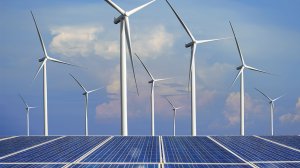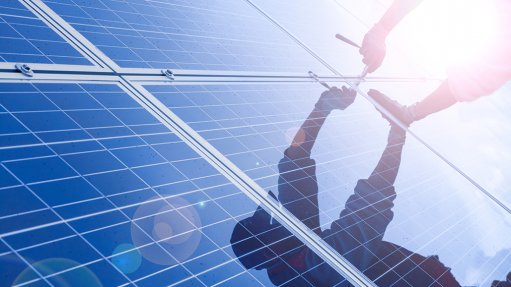Up to 72 000 energy transition jobs could be created in Mpumalanga by 2030, study shows
South Africa’s Mpumalanga province can compensate for a large share of the job losses that will arise in its declining coal sector and lay the foundations for the creation of a new clean-energy hub for the country by scaling up investments in renewable energy and accelerating coal decommissioning, a new study shows.
Published by the COBENEFITS project, which is financed via the International Climate Initiative, the study assesses the co-benefits of a transition from coal to renewable energy.
Using analysis conducted by the Council for Scientific and Industrial Research, Enertrag, Prime Africa, and Navitas Energy, the report includes various transition scenarios for the province and outlines the potential for job creation and local value creation, as well as skill requirements and opportunities for gender-inclusiveness.
Under the most ambitious scenario, dubbed the ‘Super H2igh Road’, up to 72 000 direct, indirect and induced jobs could be created in Mpumalanga by 2030, the study shows.
These are primarily in renewable-energy plant construction, with operations and maintenance accounting for 20% of the total jobs.
The scenario envisages this renewables capacity being deployed on repurposed Eskom sites, including Komati, Camden, Grootvlei, Arnot and Hendrina, as well as on coal mining land in the area. It also foresees the building of additional renewables capacity in Mpumalanga for green hydrogen production.
It draws its name from the ‘Super H2igh Road Scenario for South Africa’ produced earlier this year by IHS Markit and commissioned by Agora Energiewende. That earlier study suggested that, with a supportive policy and regulatory framework, South Africa could attract $106-billion in incremental investment to help realise its green hydrogen potential and create 370 000 jobs.
In the new co-benefits study, the scenario assumes an accelerated decommissioning of 17.8 GW of coal capacity as opposed to the 10.6 GW outlined in the Integrated Resource Plan of 2019 (IRP2019) and that Mpumalanga is allocated 15% of the new onshore wind and 20% of the solar photovoltaic to be built in South Africa by 2030.
Under the most ambitious scenario, the study calculates that almost three times more jobs can be created in Mpumalanga by 2030 than would be the case under an IRP2019-linked scenario, which would yield 27 000 jobs.
The number of jobs lost in the coal sector would depend on the number of power plants decommissioned over the period, with more than 74 100 assumed to be lost with the closure of 10.6 GW and about 123 600 to be shed should 17.8 GW be decommissioned.
The study acknowledges that not all job losses in the fossil-fuel sector can be compensated for by new clean-energy jobs in Mpumalanga.
“The decommissioning process is estimated to result in net job losses in the province by 2030.
“Therefore, a wider strategy for economic growth is needed, including other sectors such as tourism and agriculture.”
The Super H2igh Road Scenario also assumes that renewables investment in Mpumalanga could reach R321-billion over the period, representing a 172% increase on the R118-billion under the IRP2019 scenario. Under all scenarios, the local value creation associated with renewable-energy sources will outweigh the lost value arising from the coal decommissioning.
It adds that by increasing local content requirements from 30% at present to between 60% and 80%, gross output value in Mpumalanga could be increased to R343-billion.
To support a provincial clean energy industry, special economic zones could be established to provide an attractive environment for companies that provide the balance of electrical plant components, such as transformers, switchgear, and cabling, which together comprise up to 65% of plant value and are already manufactured competitively in South Africa.
The study also argues that the transition from fossil fuels to clean energy represents an opportunity to improve conditions for women working in the energy sector in Mpumalanga.
Women, it shows, are currently underrepresented in the energy sector, making up 29% of Eskom employees and 21% of the employees at coal mines.
“Women could be educated and empowered by establishing dedicated programmes at technical vocational education and training colleges and by providing childcare facilities close to training centres.
“Existing initiatives to mentor and coach young women in the renewables sector should be further enhanced,” the study recommends.
Comments
Press Office
Announcements
What's On
Subscribe to improve your user experience...
Option 1 (equivalent of R125 a month):
Receive a weekly copy of Creamer Media's Engineering News & Mining Weekly magazine
(print copy for those in South Africa and e-magazine for those outside of South Africa)
Receive daily email newsletters
Access to full search results
Access archive of magazine back copies
Access to Projects in Progress
Access to ONE Research Report of your choice in PDF format
Option 2 (equivalent of R375 a month):
All benefits from Option 1
PLUS
Access to Creamer Media's Research Channel Africa for ALL Research Reports, in PDF format, on various industrial and mining sectors
including Electricity; Water; Energy Transition; Hydrogen; Roads, Rail and Ports; Coal; Gold; Platinum; Battery Metals; etc.
Already a subscriber?
Forgotten your password?
Receive weekly copy of Creamer Media's Engineering News & Mining Weekly magazine (print copy for those in South Africa and e-magazine for those outside of South Africa)
➕
Recieve daily email newsletters
➕
Access to full search results
➕
Access archive of magazine back copies
➕
Access to Projects in Progress
➕
Access to ONE Research Report of your choice in PDF format
RESEARCH CHANNEL AFRICA
R4500 (equivalent of R375 a month)
SUBSCRIBEAll benefits from Option 1
➕
Access to Creamer Media's Research Channel Africa for ALL Research Reports on various industrial and mining sectors, in PDF format, including on:
Electricity
➕
Water
➕
Energy Transition
➕
Hydrogen
➕
Roads, Rail and Ports
➕
Coal
➕
Gold
➕
Platinum
➕
Battery Metals
➕
etc.
Receive all benefits from Option 1 or Option 2 delivered to numerous people at your company
➕
Multiple User names and Passwords for simultaneous log-ins
➕
Intranet integration access to all in your organisation





















